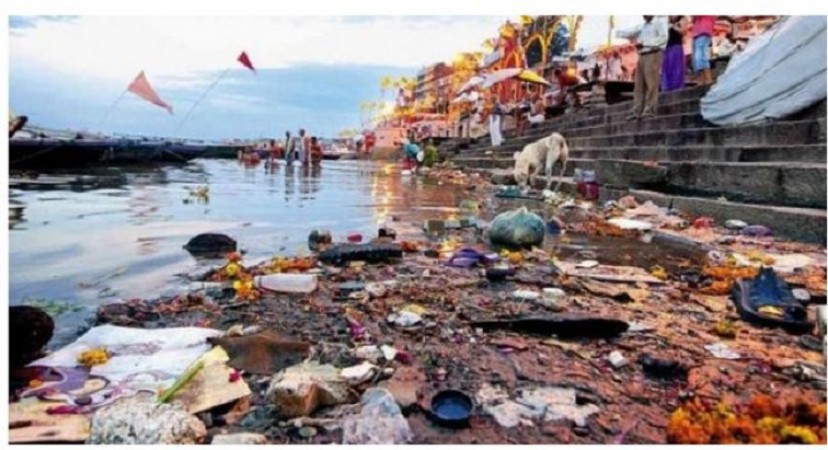
New Delhi: An official release from the National Mission for Clean Ganga (NMCG) states that nine projects totaling Rs 1278 crore were approved at the 47th meeting of the NMCG Executive Committee on Thursday, February 23.
Seven of the nine initiatives are focused on reducing pollution in the Ganga Basin, while two are on developing ghats. Director General of the NMCG, G. Asok Kumar, served as the meeting's chairman. A project in West Bengal worth Rs 123.02 crore was approved for the construction of a 13 MLD STP and a 300 KLD decentralised STP at Chakdaha Municipal Town in the main stem of the River Ganga.
Three projects totaling Rs. 422 crore were approved in Uttar Pradesh. These projects include one in Prayagraj that will increase the sewage treatment capacity of Salori STP by 43 MLD in order to intercept and divert 13 drains. This project also includes building a 20 KLD faecal sludge co-treatment facility.
A second initiative in Uttar Pradesh aims to revitalise River Kali East by creating an in-situ Built Wetland System at eight locations was authorised, costing Rs 95.47 crore, and is located in Muzaffarnagar, Meerut, Hapur, and Bulandshahar.
The development of oxidation, filtration, and planting segments inside the waterway at one spot constitutes the horizontal and vertical arrangements for filtration that make up the wetland construction. The benefit of the proposed methodology is that there will be no alteration to the river's morphology and no blocking of the stream during the flood. One project for the creation of a ghat in Fatehpur's Nageshwar Dham Ashram was approved, costing Rs 2.84 crore.
In order to reduce pollution in the River Ganga, a proposal to build two sewage treatment plants (10.91 MLD and 10.66 MLD) at a projected cost of Rs 94.12 crore was approved for the Bihar town of Lakhisarai.
One project for the development of Atal Ghat Manjhi, Saran, Bihar, with an estimated cost of Rs. 10.04 crore, was also approved for ghat development in the state. The Atal Ghat project consists of the construction of a ghat area for bathing, amenities, a place for Pooja and other religious activities, drinking water points, flood lights for the evening, a location for "shraad" pooja and "mundan," landscaping, and wet and dry dustbins for separating waste at the source.
The Executive Committee for Madhya Pradesh was presented with two projects for approval, of which one large project, costing Rs. 511.15 crore, was approved to reduce pollution in the Rivers Khan and Saraswati in Indore. The project calls for the building of two STPs with capacity of 120 MLD, 40 MLD, and 35 MLD. The construction of the treated water reuse network with STPs with capacities of 120 MLD and 35 MLD is a crucial part of this project.
A 22 MLD STP and 2.35 MLD Effluent Treatment Plant in Ujjain Town with an Estimated Cost of Rs 92.78 crore was another proposed project in Madhya Pradesh for the reduction of pollution in the River Kshipra. But, this initiative was brought up for more information.
A project called "Pollution Inventorization, Assessment and Surveillance on River Ganga Basin (PIAS)" piloted by the Central Pollution Control Board (CPCB) was allowed for the purpose of monitoring industrial pollution, with an estimated cost of Rs. 114.42 crore.
The project calls for annual inventory updates, annual inspections of gross polluting industries (GPIs) by a third party and the CPCB, monitoring of recipient drains of highly polluting industries and industrial clusters, drain monitoring, STP monitoring, CETP monitoring, and an online continuous emission monitoring system (OCEMS) dashboard and IT portal.
Survey, Investigation for Rejuvenation and Conservation of Shahdara Drain with Nature-Based Treatment – Soil Biotechnology (SBT)', a first-of-its-kind project, was also approved for Rs 1.9 crore. Drone survey, bathymetric survey, field survey and data gathering, as well as an examination of inlet drain discharge, water quality and testing, and soil/sludge properties are all part of the project.